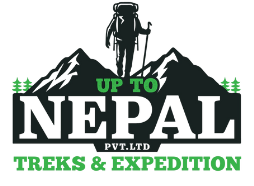Everest Expedition South Ridge
Date Expired !
Overview
The Everest South Ridge Expedition is an extraordinary mountaineering journey that takes climbers to the summit of the world’s highest peak, Mount Everest (8,848 meters), through the Southeast Ridge, one of the most iconic and traditional routes. This expedition is designed for experienced climbers who are ready to push their physical and mental limits while facing a series of challenging obstacles at high altitudes.
The expedition begins with a flight from Kathmandu to Lukla, followed by a trek through the beautiful Sherpa villages of the Khumbu region, with stops at Namche Bazaar, Tengboche, and Lobuche to allow for acclimatization. The approach to the base camp (5,200 meters) is both physically demanding and awe-inspiring, as climbers are surrounded by panoramic views of towering Himalayan peaks like Lhotse, Nuptse, and Ama Dablam.
At Everest Base Camp, climbers will prepare for the ascent, which begins with crossing the treacherous Khumbu Icefall. This section is notorious for its deep crevasses, towering seracs, and frequent avalanches, making it one of the most technical parts of the climb. With the help of experienced Sherpas, the team will navigate this icefall using ladders, ropes, and safety equipment to reach Camp 1 at 5,900 meters.
From Camp 1, climbers will proceed to Camp 2 at 6,400 meters, located on a lateral moraine at the bottom of the Western Ridge. Camp 2 serves as the primary base for acclimatization and climbing efforts, offering climbers a chance to rest and prepare for further ascents. Here, they will begin preparing for the climb up the Lhotse Face, a steep and icy section that leads to Camp 3 at 7,100 meters.
Camp 3 is a high-altitude base located on the Lhotse Face, where climbers will face a challenging ascent, often feeling the effects of altitude sickness due to the thin air. The climb to Camp 3 involves steep ice slopes and fixed ropes, but it is essential for acclimatization before attempting the summit.
The final push to the summit begins from Camp 3, heading towards the South Col at 8,000 meters. The South Col, a flat area surrounded by Everest and Lhotse, serves as the final camp before the summit. Here, climbers rest and prepare for the final section of the climb, which includes passing through the Balcony, the Hillary Step, and the South Summit.
The final push to the summit of Everest is physically demanding, requiring climbers to ascend through harsh snow slopes and navigate technical features such as the Balcony and Hillary Step. Once climbers reach the true summit at 8,848 meters, they will be standing at the top of the world, overlooking a vast expanse of snow-capped mountains and breathtaking landscapes.
The descent is equally challenging, requiring climbers to safely return to the South Col and then to Camp 2, before heading back down to Base Camp. The entire expedition typically lasts around 67 days, allowing time for acclimatization, rest, and strategic weather assessments.
This expedition is suitable for experienced climbers who have prior high-altitude mountaineering experience and are prepared for the intense physical and mental challenges of the climb. Above Himalaya Adventures provides professional guides, Sherpas, and state-of-the-art equipment to ensure climbers have the support and safety they need for this life-changing adventure. With a focus on safety, acclimatization, and logistical support, this expedition offers a chance to fulfill the dream of standing at the summit of Mount Everest, experiencing the ultimate mountaineering challenge on the planet.
